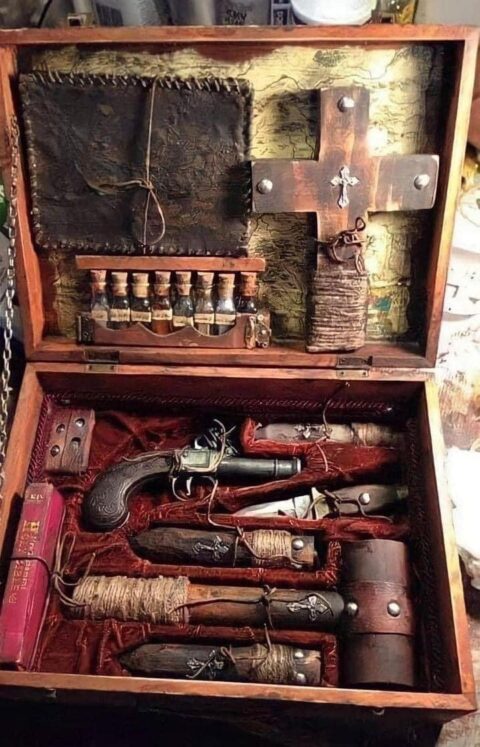

Vampire hunting kits from the 19th century are fascinating artifacts that reflect the folklore, superstitions, and cultural beliefs of that time. However, it’s important to note that these kits were likely created for entertainment purposes or as novelty items, rather than practical tools for actual vampire hunting. The belief in vampires was prevalent in various cultures, and these kits catered to the public’s interest in the supernatural.
Typically, a 19th-century vampire hunting kit might include various items associated with protecting oneself from or hunting vampires. These items could include:
Wooden stakes: Often made of oak or another type of hardwood, these stakes were intended for staking vampires through the heart.Crucifixes or religious symbols: To ward off vampires, many kits included crucifixes, religious medals, or other symbols believed to have protective properties.Garlic: Garlic has long been associated with warding off evil, including vampires. Cloves of garlic might be included in the kit.Holy water: water that has been blessed by a religious figure and is believed to have protective qualities against supernatural beings.Vials of various substances: Some kits contained vials of substances like salt, herbs, or powders thought to have protective or banishing properties.Mirrors: Vampires were sometimes believed to cast no reflection, so mirrors were included to detect their presence.
It’s essential to approach these kits with historical and cultural understanding. While they can be intriguing artifacts, they were likely created for commercial purposes rather than as serious tools for dealing with supernatural threats. Many surviving vampire hunting kits are now collectors’ items or curiosities in museums, providing a glimpse into the beliefs and fears of the past.
